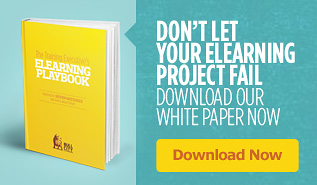TLDC (Training, Learning, and Development Community) hosts a daily Cast – a conversation with a guest about some aspect of training and development. It’s a fun form of professional development, with Brent Schlenker talking with a different guest every day! (For those who’ve been around a while, you may remember Brent from his work with The eLearning Guild.)
I was a guest in TLDCast this week. It was fun to talk with Brent and we spent a good deal of time talking about microlearning. I was saying how I think the key to “going micro” is to focus on the enabling objectives. Just like most projects, start by thinking about the performance objectives, then identify the learning objectives. But then break those learning objectives into their enabling objectives, and continue breaking it down until you have something you can realistically address in about 5 minutes or less.
Then someone asked a great question in the TLDCast chat. She had also been considering breaking her content into small learning objectives. This person said that if you look at a common classroom experience you may have only 3 learning objectives for a half (or even full) day session. So then, by extrapolation, if you go micro and you have an objective for every 5 minutes, that live session would have 10 or more learning objectives for every hour of seat time! She pointed out that doesn’t make sense and asked if you could ever have a piece of microlearning content that doesn’t have a learning objective.
Personally, I believe every piece of microlearning needs to have a learning objective – that is, a reason the learner should consume this piece of learning. And in fact, if your microlearning is not required (that is, it is informal learning, performance support, etc.), you absolutely need a clear reason for the learner to want to consume it, and a clear link to performance and their moment of need. It may be a very, very small objective – but there must be an objective none-the-less.


